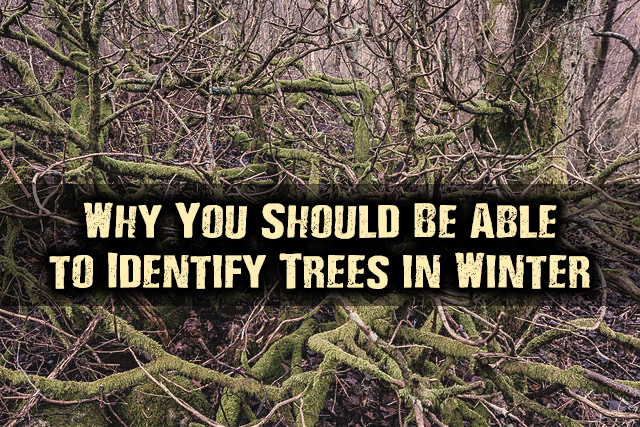
I’ve said it before and I’ll say it again: If you want to be a “survival” person, you have to be a plant person. The ability to identify herbaceous plants, vines, shrubs and trees (with and without their leaves) will give you many advantages in the realm of survival. These are just three of the things that winter tree identification will provide for you.
Finding Food
If you can learn to spot oak or beech trees, then you’ll have a place to start searching the ground for leftover acorns and beech nuts. Oaks and beech trees are closely related, and they both have a tendency to hold onto some of their dead leaves through the winter. This makes them easy to spot at a distance, almost like a beacon to those who are hungry.
Getting Water
In late winter, the right trees can provide fresh and safe drinking water. Maple trees (the genus Acer) are commonly tapped for their sap. This liquid is typically boiled down turn into syrup, but it can also be drunk as a safe water source. Sycamore (Platanus occidentalis), birches (the genus Betula), hickories (the genus Carya) and black walnut (Juglans nigra) can also be tapped for drinking water, or have their sap boiled down into syrup. It’s also important to note that these are all broadleaf deciduous trees that require you to be able to ID them without their leaves.
RELATED: How to Prepare and Hunker Down for Winter Storms
Making Fire
From tinder and kindling, to fire wood and friction fire equipment – there are hundreds of woody plant species that can help you start a fire and maintain it. Fire can be a lifesaver any time of year, but it’s especially vital in the winter. And knowing the identity of your local trees will allow you to make better choices when collecting materials.
So how do perform this magic trick of identifying leafless trees and shrubs? The easiest way for beginners is to use a field guide designed for the task. Woody Plants In Winter by Core and Ammons is my favorite title. It’s an older book from a small publisher (so it may be a little tricky to get), but it’s worth the search. This book details the parts that many people tend to ignore: the buds, leaf scars, and bundle scars on the twigs. These scars and other markings on twigs can tell you which family the plant belongs to, and even which genus and species you are looking at. This book also guides you by looking at the branching pattern, whether it’s alternate or opposite. This detail lets you quickly differentiate between similar looking genera. Not sure what tree you’re looking at? Grab a guide and figure it out. Once you’ve figured out the most common trees in your area, you’ll know how to identify most of the trees you’ll encounter there.
Source: outdoorlife.com
Self-sufficiency and Preparedness solutions recommended for you:
The Lost Ways (The vital self-sufficiency lessons our great grand-fathers left us)
Food for Freedom (If I want my family to survive, I need my own food reserve)
Liberty Generator (How to gain complete energy independence)
Alive After the Fall (Build yourself the only unlimited water source you’ll ever need)
Blackout USA (EMP survival and preparedness guide)


